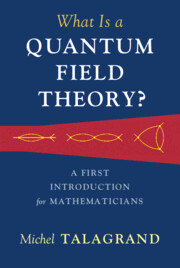Book contents
- Frontmatter
- Dedication
- Contents
- Introduction
- PART I Basics
- 1 Preliminaries
- 2 Basics of Non-relativistic Quantum Mechanics
- 3 Non-relativistic Quantum Fields
- 4 The Lorentz Group and the Poincaré Group
- 5 The Massive Scalar Free Field
- 6 Quantization
- 7 The Casimir Effect
- Part II Spin
- Part III Interactions
- Part IV Renormalization
- Part V Complements
- Solutions to Selected Exercises
- Reading Suggestions
- References
- Index
4 - The Lorentz Group and the Poincaré Group
from PART I - Basics
Published online by Cambridge University Press: 22 February 2022
- Frontmatter
- Dedication
- Contents
- Introduction
- PART I Basics
- 1 Preliminaries
- 2 Basics of Non-relativistic Quantum Mechanics
- 3 Non-relativistic Quantum Fields
- 4 The Lorentz Group and the Poincaré Group
- 5 The Massive Scalar Free Field
- 6 Quantization
- 7 The Casimir Effect
- Part II Spin
- Part III Interactions
- Part IV Renormalization
- Part V Complements
- Solutions to Selected Exercises
- Reading Suggestions
- References
- Index
Summary
It is an extremely well-established experimental fact that the speed of light is the same for all “inertial observers” (those who do not undergo accelerations). The analysis of the consequences of this remarkable fact has forced a complete revision of Newton’s ideas: Space and time are not different entities but are different aspects of one single entity, space-time. Different inertial observers may use different coordinates to describe the points of space-time, but these coordinates must be related in a way that preserves the speed of light. The changes of coordinates between observers form a group, the Lorentz group. To a large extent the mathematics of Special Relativity reduce to the study of this group. Physics appears to respect causality, a strong constraint in the presence of a finite speed of light. We introduce the Poincaré group, related to the Lorentz group. We develop Wigner’s idea that to each elementary particle is associated an irreducible unitary representation of the Poincaré group and we describe the representation corresponding to a spinless massive particle, explaining also how the physicists view these matters.
Keywords
- Type
- Chapter
- Information
- What Is a Quantum Field Theory? , pp. 102 - 131Publisher: Cambridge University PressPrint publication year: 2022

